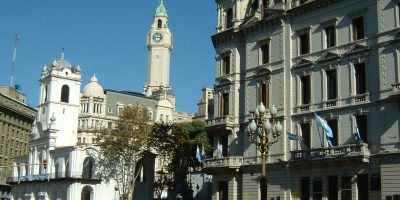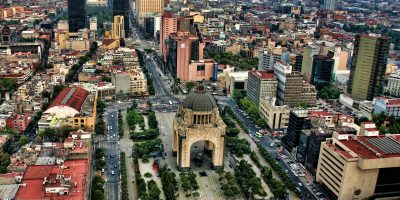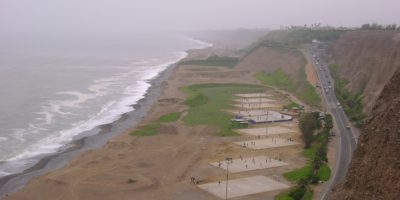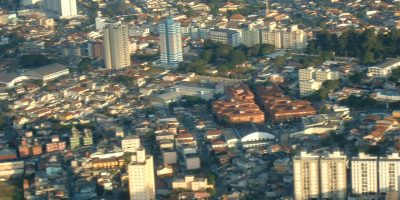In this section we provide you a wide overview of Latin American Economy, Politics and Business Opportunities in 2 minutes.
Latin America contracted 0.7% during, this recession was mainly caused by the deterioration in Argentina, Brazil and Venezuela. Lower price of commodities: Soybean, cooper and Iron. Followed by government protections, and slowing down growth. For 2017, the region should growth 1,6 and 2018 2,5% GDP Growth in %. Mainly in Argentina and Brazil. Mexico will suffer the most due to the dependence with US. Get detailed information at the free webinar “Latin America in 2017, A turning point? from FOCUSECONOMICS.
Source: FOCUSECONOMICS
Argentina

- February 22, Argentinean President Mauricio Macri began a state visit of four days to Spain. Argentinas. Accompanied by more than 200 business leaders, Macri aim is to promote Spanish investors to return to his country. After Cristina Fernández de Kirchner decision in 2012, to nationalize YPF Spanish hydrocarbons giant Repsol the relationship was damaged.
- February 25, The President of the Government, Mariano Rajoy, delivered yesterday “the Nueva Economía Fórum Award 2017 for Economic Development and Social Cohesion” to the president of Argentina, Mauricio Macri, finishing his official visit to Spain. Source: The Diplomat
- March, A prosecutor requested the imputation of the Argentine head of state by the possibility that it has benefited the Macri Group in the allocation of new routes for low cost companies. The president of Avian, the Argentine subsidiary of Avianca, is the same as MacAir, the Macri airline, which was sold to the Colombian company a year ago. Source: El País
Brazil

- Brazil is still struggling in the worst recession seen in decades. Its already depleted economy has contracted again for the third consecutive year, according to the indices of Gross Domestic Product (GDP) that the Institute of Geography and Statistics published on Tuesday. The first Latin American power fell 3.6% in 2016, a decline similar to that of 2015, when it fell by 3.8%.
- March 8, 2017. Last week the Central Bank estimated that Brazil will grow, in fact, by 0.49% in 2017, in a survey of over one hundred financial institutions.
El Salvador

- February 2016, El Salvador and Ecuador signed the Partial Scope Agreement of Economic Complementation between the two countries. From the 214 products that El Salvador will be exporting to Ecuador with Preferential Tariffs stands out: candies, plastic products, juices and nectars, snacks, medicines, paper bags, apparel products, among others. Ecuador will have the opportunity to enter the Salvadoran market with 207 products including flowers, white line products, ceramics, and leather products, derived from cocoa, among others. In 2016 the trade between Ecuador and El Salvador reached USD 50 million.
Mexico

- February 3, 2017. The Mexican government began a 90-day consultation with businesses on what its NAFTA negotiating position should be. Wilbur Ross, who will lead the American negotiators after the Senate confirms him as commerce secretary. Mr Ross is no free trader. According to a report by the Globe and Mail, a Canadian newspaper, he has identified two priorities for NAFTA renegotiation: the dispute-settlement process and “rules of origin”. These rules put a ceiling on the value of inputs that an exporter to another NAFTA country can buy from outside the area. Both ideas are contentious. Source: The economist
- March 3, 2017. US Commerce Secretary Wilbur Ross said to CNBC that the peso should recover if the United States and Mexico reach a new trade agreement. “I believe that if we and the Mexicans make a very sensible trade agreement, the Mexican peso will recover quite a lot,”
- The peso plunged after President Trump won the election. The Mexican economy relies heavily on trade and investment from the United States, and Trump has threatened to build a border wall, slap tariffs on Mexican goods and withdraw from NAFTA, the free trade agreement with Canada and Mexico. Source CNBC
Peru

- March 8, the Minister Gonzalo Tamayo stated that the South American country’s outlooks as a safe destination for mining investments.
- “In Latin America, Peru leads not only in mining potential, but also in macroeconomic stability. We have a low inflation rate and high growth compared to other countries in the region,” he pointed out.Source: Andina
Venezuela

- The central Bank announced that Venezuela only has $10.5 billion in foreign reserves left.
- The thinning reserves paint a scary financial picture as the country faces a humanitarian crisis sparked by an economic meltdown. Venezuelans are suffering massive food and medical shortages, as well as skyrocketing grocery prices. Source: CNN Money


